Understanding Medicaid Waivers and Their Impact on Home Care Access
Medicaid waiver programs serve as vital tools in broadening access to home and community-based services across the United States. By offering tailored support that enables individuals with disabilities, seniors, and others to remain in their homes, these programs shift the focus from institutional care to community-centered support, fostering independence and improving quality of life. This article explores how Medicaid waivers operate, the variety of services they include, and the ways they promote equitable access to essential home care services.
Goals and Functions of Medicaid Waiver Programs
Medicaid waiver programs serve a vital role in transforming how long-term care services are delivered to individuals with disabilities or chronic health conditions. Their primary aim is to facilitate support for long-term care at home or within community settings, providing an alternative to institutionalization.
These programs promote independence by enabling eligible individuals to receive necessary services in familiar and comfortable environments. They also emphasize community integration, helping individuals maintain social connections and participate actively in their communities.
Support for personalized, person-centered care forms the cornerstone of Medicaid waivers. Participants have access to a variety of tailored services, such as case management, personal care assistance, adult day services, and respite care. This flexibility allows care to be customized based on each person’s unique needs, preferences, and circumstances.
By waiving certain Medicaid requirements—like the necessity for services to be available universally across the entire state—these programs can target specific populations and address specific needs. They include a range of health and human services, enabling a holistic approach to caregiving that enhances quality of life.
Overall, Medicaid waiver programs are designed to improve the well-being of vulnerable populations by expanding access to community-based care options, reducing reliance on costly institutions, and supporting individuals’ autonomy and integration into society.
| Aspect | Description | Additional Details |
|---|---|---|
| Support for care at home | Facilitate long-term services in the home or community | Includes personal care, therapies, case management |
| Promotion of independence | Allow individuals to live with greater autonomy | Reduce need for nursing homes or hospitals |
| Person-centered care | Offer tailored services based on individual preferences | Customized plans, choice of providers |
| Service scope | Encompass medical and non-medical supports | Respite, home modifications, assistive technology |
| Program flexibility | Waivers allow states to waive standard Medicaid rules | Target specific groups, extend benefits |
Search for more about Medicaid waiver goals and services in long-term care by exploring resources like the CMS website and state Medicaid agencies.
Types of Medicaid HCBS Waivers and Eligibility Criteria
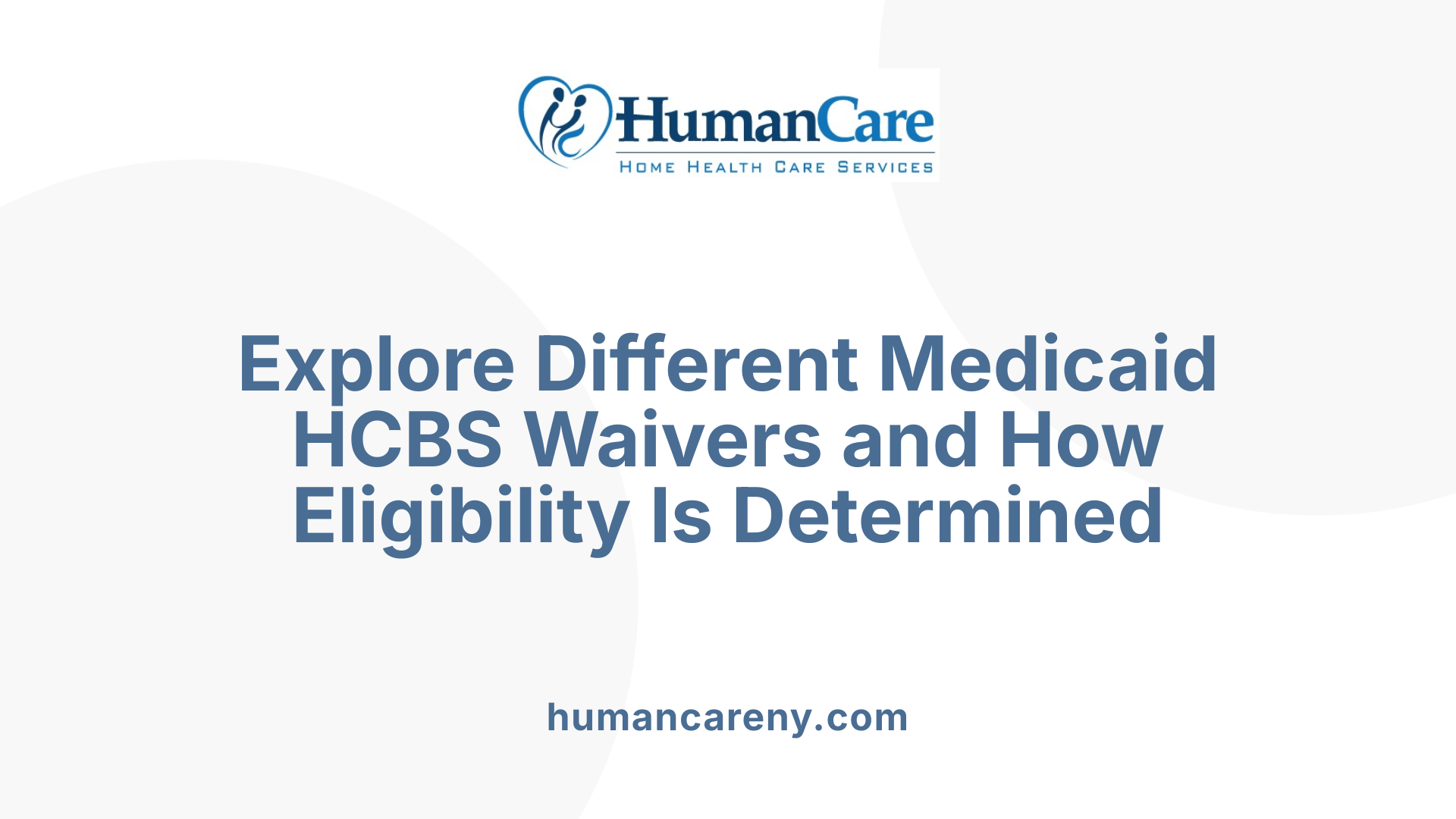 Medicaid Home and Community-Based Services (HCBS) encompass a variety of waiver programs that provide accessible, person-centered long-term care options outside of institutional settings. These waivers enable eligible individuals, such as seniors, persons with disabilities, or those with specific health conditions, to receive services in their homes or community environments.
Medicaid Home and Community-Based Services (HCBS) encompass a variety of waiver programs that provide accessible, person-centered long-term care options outside of institutional settings. These waivers enable eligible individuals, such as seniors, persons with disabilities, or those with specific health conditions, to receive services in their homes or community environments.
There are several types of Medicaid waiver programs, each designed to serve different populations and needs. Notably, the Section 1915(c) waivers are the most common, allowing states to offer a broad spectrum of services including personal care, case management, adult day care, respite, and medical equipment. States such as Illinois operate multiple 1915(c) waiver programs to address diverse needs, from intellectual disabilities to aging-related supports.
Apart from 1915(c) waivers, other types like 1115 Demonstration Waivers and 1915(b) waivers also expand Medicaid's flexibility. 1115 waivers can pilot innovative service models or eliminate waiting lists, while 1915(b) waivers focus on managed care approaches, controlling costs and streamlining access.
Services offered under these waivers typically include assistance with Activities of Daily Living (ADLs), instrumental activities (IADLs), medical services, home modifications, transportation, and even oral health supports in some cases. These services target populations such as older adults, individuals with physical or intellectual disabilities, and those with mental health conditions.
Eligibility criteria depend heavily on both financial and functional needs. Applicants usually must meet income and asset tests aligned with Medicaid standards, along with demonstrating the need for an institutional level of care. This includes assessments of daily living capabilities, often verified through medical and functional evaluations.
States establish specific processes for application and assessment, which can include detailed documentation, physician verification, and considerations related to transfer of assets. Due to limited enrollment caps, many programs maintain waiting lists, prompting families to seek alternative supports while waiting.
In summary, Medicaid HCBS waivers accommodate a wide range of services tailored to individual needs, enabling many to live independently and reducing reliance on costly institutional care. They are vital components of the broader Medicaid program, designed to promote community integration, cost-efficiency, and personal choice.
How Medicaid Waivers Enhance Access to Home Care Services
How do Medicaid waiver programs enhance access to home care services?
Medicaid waiver programs play a vital role in expanding access to home and community-based services (HCBS) for individuals who wish to receive care outside of traditional institutional settings. These programs give states the flexibility to design tailored services that specifically meet the needs of various populations, including seniors, people with disabilities, and those at risk of nursing home placement.
Through waivers such as Section 1915(c), states can provide a wide array of services—ranging from personal care and respite to home modifications and adult day health—based on individual needs and preferences. This personalized approach helps individuals stay in their homes longer and maintain independence.
A major advantage of Medicaid waivers is their ability to target specific groups. States can designate services for particular diagnoses or demographics, such as elderly individuals, persons with intellectual or developmental disabilities, or those with certain health conditions. Additionally, waivers often allow states to bypass some federal Medicaid requirements, like the need for services to be available statewide, enabling more focused and effective support for underserved populations.
Furthermore, these programs foster consumer-directed care, empowering recipients to choose their caregivers—sometimes family members or friends—who are paid for providing essential support. This arrangement often leads to higher satisfaction and better care quality.
Overall, Medicaid waivers significantly increase access to necessary home care services, reducing reliance on costly inpatient care and improving the well-being and community integration of eligible individuals.
Long-term Care Services Covered Under Medicaid Waivers
Which long-term care services are typically covered under Medicaid waiver programs?
Medicaid waiver programs are instrumental in providing a broad array of long-term care services designed to support individuals in community settings. These services aim to help recipients maintain independence and avoid or delay institutionalization such as nursing home admission.
The most commonly covered services include personal care and assistance with Activities of Daily Living (ADLs) like bathing, dressing, toileting, and grooming. Home health aides provide vital support, helping individuals with health monitoring, medication management, and other health-related needs.
In addition to personal care, Medicaid waivers often cover adult day care programs, which offer structured activities and supervision during the day. Homemaker services assist with household chores like cleaning, laundry, and shopping, enabling individuals to live comfortably at home.
Respite care (both in-home and facility-based) provides temporary relief for family caregivers, reducing burnout and ensuring consistent care.
Beyond these core services, Medicaid waivers frequently include case management to coordinate care plans, mental health supports, assistive technologies, and minor home modifications such as ramps or bathroom grab bars. Meals delivered through programs like Meals on Wheels are also commonly included.
Certain targeted waivers focus on specific populations. For example, children with severe disabilities may receive specialized supports, and individuals with acquired brain injuries or developmental disabilities may access employment and day programs.
Notably, while these waivers provide extensive additional services, they generally do not cover traditional institutional services like nursing home stays unless explicitly allowed. The primary goal remains enabling individuals to live in their communities with the necessary supports.
Operational Structure, Funding, and Flexibilities
Medicaid waiver programs operate by granting states the authority to customize Medicaid services beyond standard federal guidelines. These programs are financed through a mix of federal Medicaid funds and state contributions, with the federal government reviewing and approving each waiver proposal through the Centers for Medicare & Medicaid Services (CMS). Once approved, states can implement tailored approaches to service delivery, eligibility, and benefits, targeting specific populations such as seniors, individuals with disabilities, or those with particular health conditions.
There are different types of Medicaid waivers, each serving distinct purposes. The most common include Section 1915(c) Home and Community-Based Services (HCBS) waivers, which enable states to expand community-based long-term care services, and Section 1115 demonstration waivers, which allow for broader reforms and pilot programs. These waivers prioritize improving access to care, reducing institutionalization, fostering innovative practices, and promoting cost-effectiveness.
States often use waivers to test new models of care, incorporate cultural competencies, and address specific barriers faced by underserved groups. For example, some waivers include oral health benefits or targeted mental health services, thereby expanding the scope of Medicaid support.
Flexibilities embedded within waiver programs facilitate service innovation and adaptation. This includes allowing self-directed care options, expanding provider eligibility, tailoring service limits, and integrating technology such as telehealth. These flexibilities not only expand access but also support person-centered care, enabling states to develop solutions responsive to local needs. Overall, waivers serve as a critical mechanism for fostering healthcare innovation within Medicaid, aligning federal oversight with state-level priorities to improve health outcomes and cost-efficiency.
Eligibility Criteria and Application Process for Medicaid HCBS Waivers
Who is eligible for HCBS services under Medicaid waiver programs?
Eligibility for Medicaid home and community-based services (HCBS) waivers is generally reserved for individuals who require a level of care comparable to that provided in an institutional setting, such as nursing homes or Intermediate Care Facilities (ICFs). These individuals often include older adults, persons with disabilities, individuals with developmental or mental health conditions such as autism, traumatic brain injury, or HIV/AIDS.
To qualify, applicants must demonstrate significant functional needs, especially with Activities of Daily Living (ADLs) like bathing, dressing, or managing medications, and Instrumental Activities of Daily Living (IADLs) such as meal preparation, transportation, and housekeeping.
States have flexibility to set additional criteria, which may include age or specific diagnoses, and often require applicants to meet income and asset limits to determine financial eligibility. Many programs target particular populations through selective criteria, and some allow for targeting based on geographic or service-specific needs.
Applicants typically need to show that without these services, they would likely be institutionalized, and that receiving care in the community is more beneficial and suitable for their well-being. Meeting these criteria qualifies individuals for access to a broad array of supportive services designed to enable them to live independently at home or in other community-based settings.
Overall, while the exact eligibility standards can vary across states and programs, the common requirement is demonstrating the need for services that help maintain community living, thus supporting aging in place and reducing reliance on costly institutional care.
Benefits and Outcomes of Medicaid Waivers in Home Care
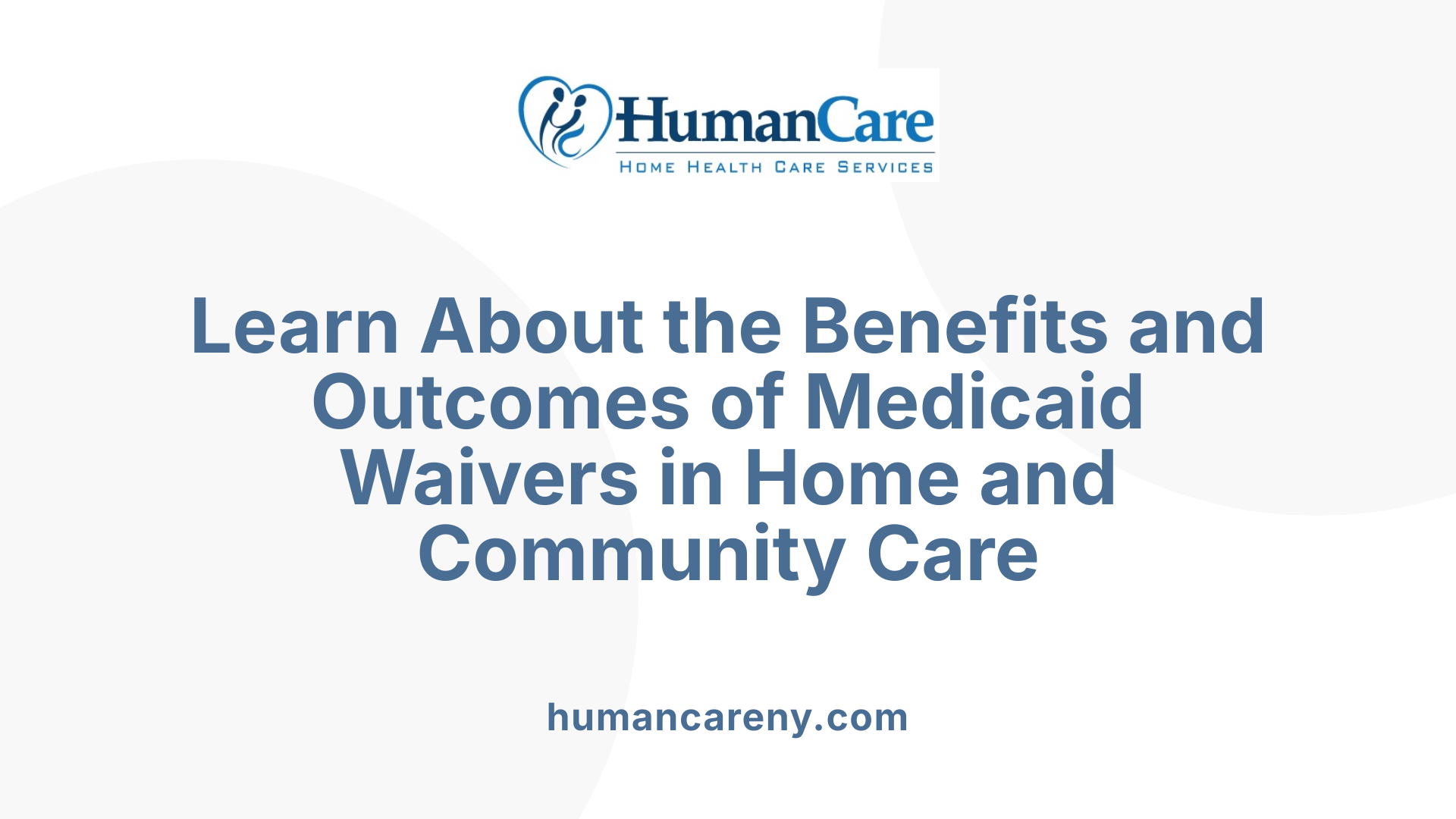
What benefits and outcomes are associated with Medicaid waiver programs in home and community-based care?
Medicaid waiver programs, especially the Home and Community-Based Services (HCBS) waiver, have become vital in supporting individuals who require long-term care. These programs provide multiple advantages, primarily focusing on fostering independence and enhancing the overall quality of life for recipients.
By enabling seniors and people with disabilities to stay in their homes or community settings, Medicaid waivers promote social inclusion and improve emotional well-being. They support person-centered planning, offering services tailored to each person’s unique needs, such as case management, respite care, habilitation, and personal assistance. These flexible services help individuals maintain daily routines, develop new skills, and stay connected with their communities.
One of the significant benefits is economic. HCBS waivers can reduce reliance on costly institutional care, which translates into substantial cost savings for Medicaid and state budgets. Studies have shown that providing care at home often costs less than nursing home care, making these programs cost-effective. They also stimulate local economies by creating jobs for direct care workers and service providers.
In addition to financial benefits, HCBS programs significantly contribute to decreasing unmet healthcare and social needs, especially among underserved populations. They help address disparities by providing targeted services to historically marginalized groups, helping narrow gaps in access to care.
Overall, Medicaid waivers contribute to a more equitable, effective, and humane approach to long-term care, promoting autonomy and dignity for vulnerable populations while controlling health system costs.
Application Process and Addressing Disparities
What are the application processes and requirements for participating in Medicaid waiver programs?
Applying for Medicaid waiver programs generally begins with determining if you meet the specific eligibility criteria, which include factors such as age, disability status, income level, and the level of care needed. These criteria vary from state to state and depend on the particular waiver program.
Prospective participants typically need to contact their state's Medicaid agency or designated resource centers like the Georgia Department of Behavioral Health and Developmental Disabilities or the Aging and Disability Resource Connections. These agencies serve as points of initial contact and guidance through the application process.
The application itself can often be submitted online, via telephone, or in person. Applicants are usually required to provide documentation such as proof of income, medical conditions, disability status, and other personal financial information. This helps determine eligibility and whether the applicant’s needs align with the services offered under the waiver.
Many waiver programs, including popular ones like Georgia’s HCB waiver, have waiting lists due to program capacity limits. During this period, applicants are typically placed in a queue based on their application submission date.
The process may also involve assessments or interviews to verify the level of care required and to craft an individualized care plan. Successfully completing the application and approval process allows eligible individuals to access tailored in-home or community-based services.
Overall, the application process is designed to confirm that applicants meet the necessary criteria for health and functional needs, ensure transparency, and facilitate appropriate service delivery.
How can we address barriers to access and promote equity in Medicaid waiver enrollment?
Despite the benefits, there are notable barriers that prevent many eligible individuals from enrolling in Medicaid waivers. These include complex application procedures, limited awareness of available programs, and long waitlists caused by capacity constraints.
To improve access, states can simplify their application processes by streamlining paperwork, offering multilingual support, and expanding online access. Providing outreach programs targeted at underserved communities, including minority populations, rural areas, and tribal communities, is crucial. These outreach efforts can include informational sessions, community health worker programs, and partnerships with local organizations.
Addressing systemic disparities involves actively monitoring enrollment data to identify gaps, particularly among racial, ethnic, and socio-economic groups. State policies should prioritize reducing these disparities by removing eligibility barriers and offering culturally competent assistance.
Moreover, leveraging federal and state policy initiatives that increase program capacity—such as waiving certain requirements or increasing funding—can help reduce waiting lists and ensure more individuals receive the care they need.
What is the role of outreach and policy initiatives?
Outreach activities and policy initiatives are vital to expanding access and promoting health equity in Medicaid waiver programs. Informing communities about available services and simplifying eligibility pathways encourage higher enrollment rates.
States and advocacy groups play an active role by conducting educational campaigns, providing application assistance, and engaging community leaders to reach diverse populations.
Policy initiatives, such as expanding funding for waivers, implementing managed care approaches, and exploring alternative authorities like 1915(i) or 1115 waivers, can help address systemic barriers.
These strategies aim to create an equitable system where individuals from all backgrounds have a fair chance to access personalized, community-based long-term care services, ultimately improving quality of life and reducing disparities in healthcare access.
Research, Effectiveness, and Strategies for Equity
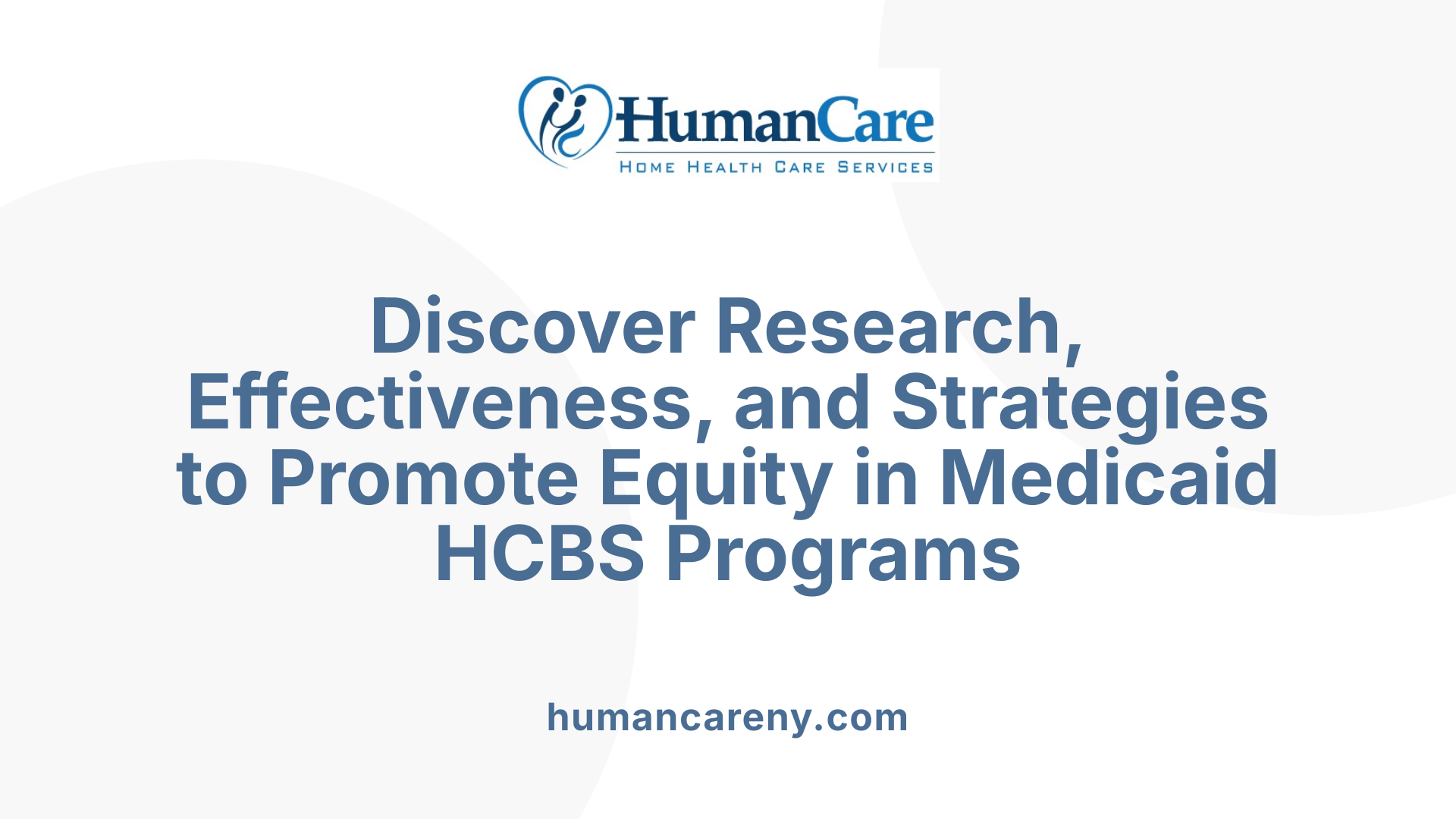
What evidence exists regarding the effectiveness and disparities of access to Medicaid waiver programs?
Research shows Medicaid waiver programs, especially home and community-based services (HCBS) waivers, effectively increase access to necessary care and reduce unmet healthcare needs among vulnerable groups. For example, studies highlight that expanded waiver services have significantly decreased disparities for Black children within autism spectrum disorder (ASD) populations. Increased generosity in waiver benefits correlates with better access and outcomes for marginalized groups.
National data indicate that Medicaid expansions and waiver implementations help bridge gaps in health coverage across racial, socioeconomic, and geographic lines. However, persistent inequities remain, particularly for minors with intellectual and developmental disabilities, including autism, Down syndrome, and related conditions. Beneficiaries with minoritized backgrounds are still less likely to enroll in or benefit from waiver programs, often due to barriers like long waiting lists, complex application procedures, and limited outreach.
Efforts such as contracting with managed care organizations, targeted outreach, and innovative policies like Section 1115 waivers are designed to address these barriers. These approaches aim to promote equity by focusing on social determinants of health, improving culturally competent care, and expanding services tailored to specific community needs.
Despite successes, challenges like extensive waitlists and enrollment complexities continue to hinder equitable access. Research underscores the importance of policy reforms that facilitate faster enrollment, broaden eligibility, and enhance outreach efforts especially among racial and socioeconomic minorities.
Overall, evidence suggests that Medicaid waiver programs have considerable potential to improve health equity. Continued refinement of waiver design, targeted outreach, and policy innovation—alongside ongoing research—are essential for narrowing persistent gaps. Strengthening these areas can ensure more equitable access and better health outcomes for all vulnerable populations.
Innovations and Policy Strategies to Improve Access
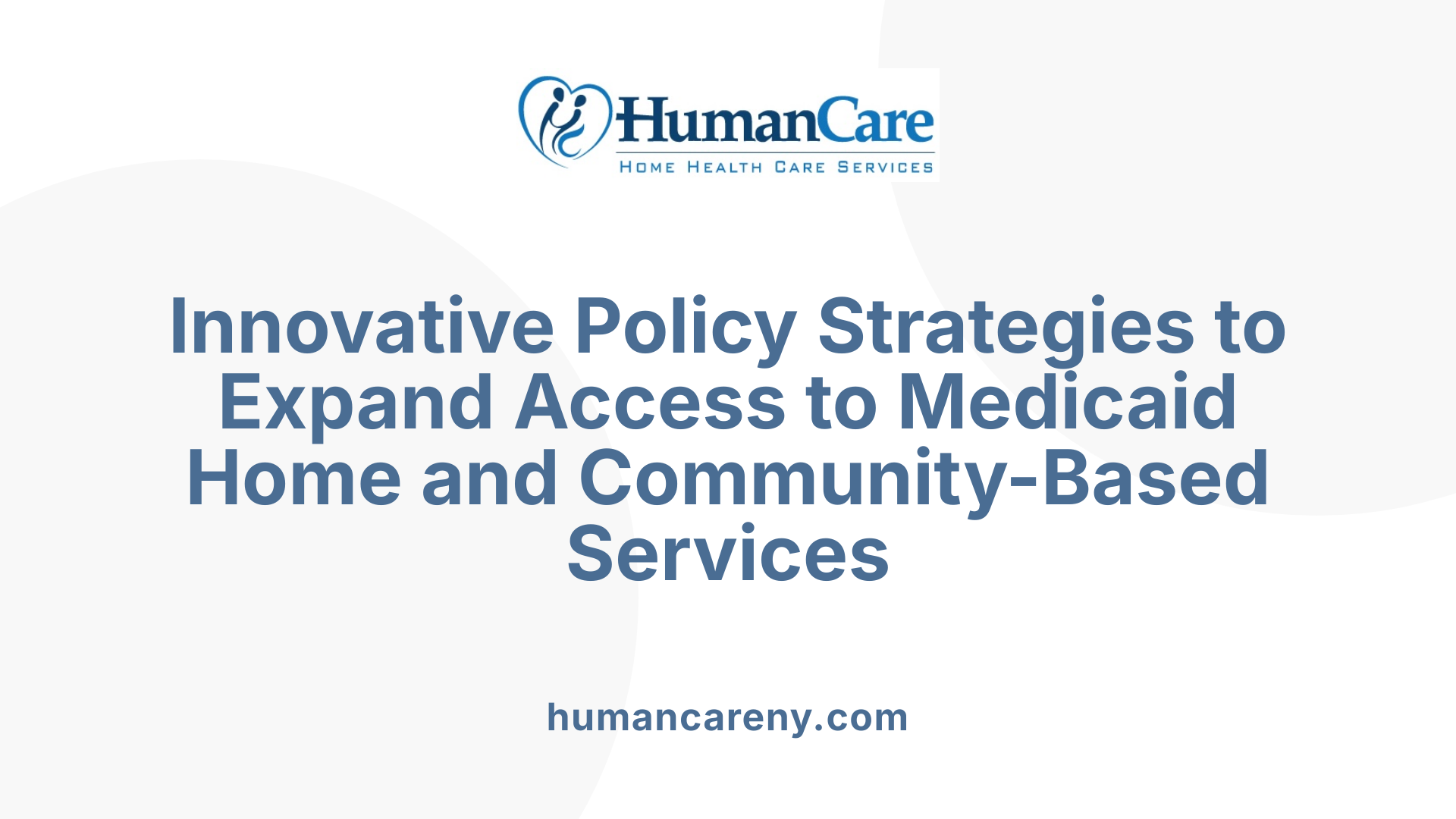
How are managed care and program redesigns enhancing home and community-based services?
Many states have adopted managed care approaches to streamline and expand access to HCBS. By integrating services into managed care models, states aim to improve coordination, control costs, and ensure a wider, more flexible array of services. Managed care organizations (MCOs) are increasingly leveraging policy flexibilities such as increased service limits and simplified authorization processes. These innovations help ensure that individuals receive timely care tailored to their needs, reducing gaps and delays.
In addition to managed care, states are redesigning programs to better meet diverse needs. For example, pooling respite benefits and packaging services like personal care with other supports allow for more personalized, continuous care. Self-direction programs also enable families to directly manage their care providers, often paying relatives, which enhances access and personal comfort.
What are policy considerations for expanding reach and promoting equity?
Expanding access to HCBS through Medicaid waivers involves addressing enrollment disparities and waitlists, which remain significant barriers. Variations in participation across racial and ethnic groups highlight the need for improved outreach and streamlined enrollment processes.
States are encouraged to evaluate their authorization procedures and consider alternative waiver authorities. This can include broadening eligibility criteria or adopting innovative service delivery models to reduce waiting times and improve coverage for underserved populations.
Efforts to promote equity also involve tailoring services based on cultural and linguistic needs, ensuring that diverse communities can access appropriate support. Strengthening provider networks and supporting caregiver workforce development are essential components for equitable expansion.
What is the role of the Medicaid Transformation Project?
The Medicaid Transformation Project (MTP) is a federal-state initiative designed to modernize Medicaid programs by utilizing federal funds to implement innovative policies. MTP supports a range of programs such as Medicaid Alternative Care (MAC) and Tailored Supports for Older Adults (TSOA), which focus on enabling seniors and disabled individuals to remain in community settings, delaying or avoiding institutionalization.
Additional initiatives within MTP include expanding mental health and substance use disorder services, increasing coverage for social determinants of health like housing and nutrition, and facilitating better re-enrollment processes. These efforts align with the goal of making community-based, person-centered care more accessible, equitable, and sustainable.
Overall, MTP exemplifies a strategic approach to reforming Medicaid by emphasizing flexible, person-focused policies that promote independence and integrate health and social services—key to strengthening the future of HCBS programs.
The Broader Impact of Medicaid Waivers in Public Health and Economic Terms
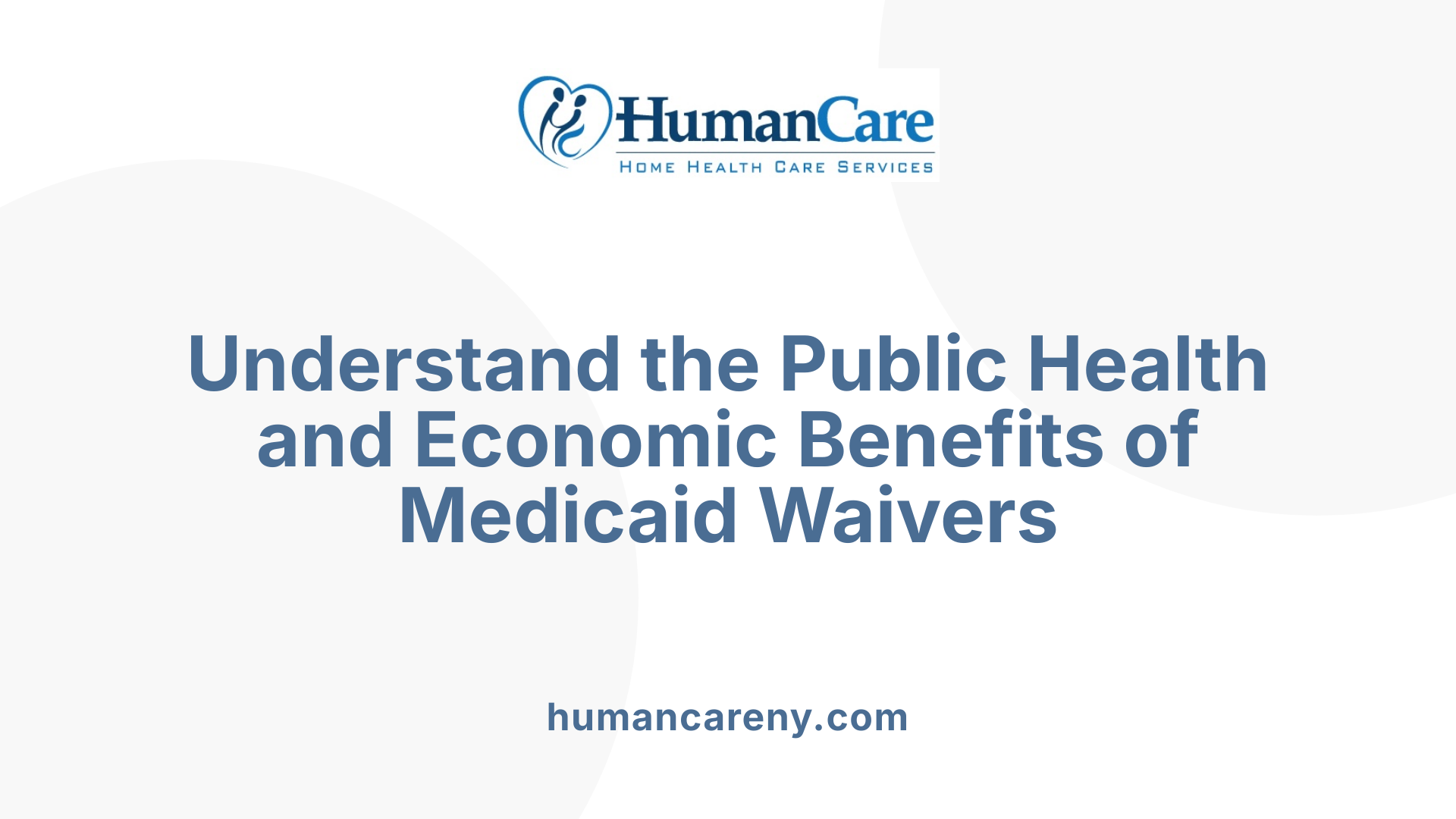 Medicaid waiver programs, especially those providing home and community-based services (HCBS), have substantial positive effects on both public health outcomes and economic stability. One notable benefit is their role in creating jobs; these programs require a broad network of providers for services such as personal care, respite, therapy, and transportation, which translates into increased employment opportunities within local communities.
Medicaid waiver programs, especially those providing home and community-based services (HCBS), have substantial positive effects on both public health outcomes and economic stability. One notable benefit is their role in creating jobs; these programs require a broad network of providers for services such as personal care, respite, therapy, and transportation, which translates into increased employment opportunities within local communities.
In addition to employment, Medicaid waivers generate significant cost savings at both the state and federal levels. By facilitating care in home and community settings, they reduce the need for expensive institutional care like nursing homes, thereby lowering overall healthcare expenditures. For example, studies have shown that shifting long-term care from facilities to community-based services leads to lower Medicaid spending while maintaining or even improving care quality.
Furthermore, these programs help reduce unmet health and social needs, particularly among vulnerable groups like individuals with disabilities and older adults. By offering tailored, person-centered services, Medicaid waivers address disparities in access to care, ensuring more equitable coverage for minoritized populations and those with complex needs.
The following table summarizes the benefits of Medicaid waiver programs in terms of economic and social outcomes:
| Benefits | Description | Impact Direction |
|---|---|---|
| Job Creation | Increased demand for home care providers and support staff | Economic |
| Cost Savings | Reduction in long-term institutional care costs | Economic |
| Reduced Unmet Needs | Enhanced access to services like respite, therapies, and personal care | Social |
| Disparity Reduction | Improved access for racial/ethnic minorities and underserved groups | Social |
Overall, Medicaid HCBS waivers are instrumental in promoting a shift toward more sustainable, equitable, and person-centered care models, ultimately leading to healthier communities and stronger economies.
Advancing Equity and Community-Based Care
Medicaid waiver programs are pivotal in transforming the landscape of long-term care by expanding community access, supporting person-centered services, and reducing disparities. Their flexible design, rooted in federal guidance and state innovation, allows tailored services that meet diverse needs while promoting independence and social inclusion. As policies continue to evolve—highlighted by initiatives like the Medicaid Transformation Project—these programs are poised to further enhance access, improve outcomes, and support sustainable, equitable care systems that respect individual preferences. Sustained investment in waiver programs and targeted outreach will be essential to overcoming existing barriers and ensuring that all populations can benefit from the full spectrum of community-based long-term care services.
References
- Home & Community-Based Services 1915(c) - Medicaid
- What is Medicaid Home Care (HCBS)? - KFF
- Inequities in medicaid home- and community-based services waiver ...
- Emerging Respite Care Strategies in Medicaid Home and ... - NASHP
- Medicaid Waivers & How They Help Seniors Live at Home
- United States Medicaid Home and Community-Based Services for ...
- Home- and Community-Based Services - CMS
- Washington State will continue Medicaid waiver for five more years



